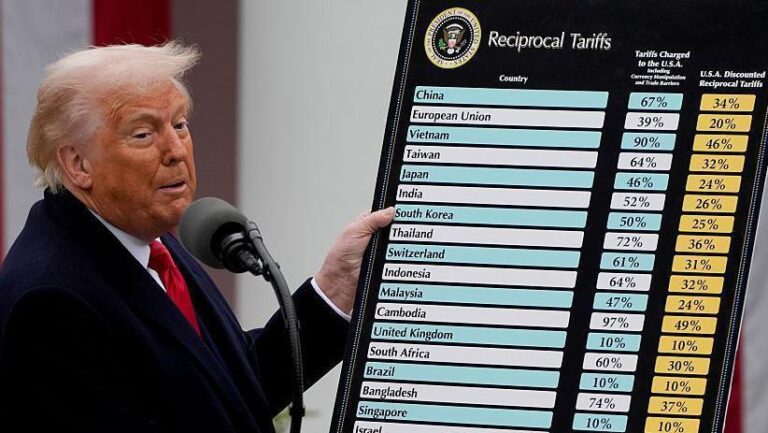As the deadline approaches, President Donald Trump has intensified his trade campaign by imposing new tariffs on key U.S. allies India, Brazil, and South Korea. The unexpected move escalates tensions amid ongoing negotiations and raises concerns over the future of global trade relations. This development marks a significant shift in the administration’s approach to foreign economic policy, with potential ripple effects across international markets.
Trump Targets India Brazil and South Korea as Tariff Deadline Approaches
With the pressure mounting as the tariff deadline nears, the administration has announced fresh trade measures targeting three major emerging economies. The new tariffs aim to address ongoing concerns related to trade imbalances, intellectual property rights, and market access restrictions. This move has reignited tensions with India, Brazil, and South Korea, countries that have already voiced their apprehensions over the economic impact and potential retaliation. Stakeholders are now bracing for ripple effects across global supply chains, particularly in sectors such as agriculture, technology, and industrial manufacturing.
Key highlights of the new tariffs include:
- Increased duties on select steel and aluminum imports from all three countries.
- Specific levies targeting technology components and agricultural goods.
- Enhanced enforcement on anti-dumping and countervailing measures.
| Country | Primary Sectors Affected | Estimated Impact ($ Billion) |
|---|---|---|
| India | Pharmaceuticals, Textiles | 1.5 |
| Brazil | Agriculture, Steel | 1.2 |
| South Korea | Technology, Automobiles | 1.8 |
Implications of New Tariffs on Global Trade and Economic Relations
The recent imposition of tariffs on India, Brazil, and South Korea marks a pivotal shift in the dynamics of global trade, challenging the established supply chains and potentially escalating tensions in economic diplomacy. These tariffs not only increase the cost of goods imported from these nations but also risk provoking retaliatory measures, which could ripple through multiple sectors including agriculture, technology, and manufacturing. The affected countries may seek alternative markets or strengthen regional trade partnerships, potentially accelerating the fragmentation of global trade networks that have been decades in the making.
Economists warn of several key consequences:
- Heightened uncertainty for multinational corporations, leading to delayed investments and cautious expansion strategies.
- Potential disruption in commodity prices, affecting both producers and consumers worldwide.
- Shifts in currency valuations as countries respond to tariff pressures.
| Country | Tariff Impact (%) | Major Export Sectors Affected | |||||||||||||||
|---|---|---|---|---|---|---|---|---|---|---|---|---|---|---|---|---|---|
| India | 25 | Steel, Pharmaceuticals | |||||||||||||||
| Brazil | 20 | Agriculture, Automotive | |||||||||||||||
| South Korea | 15 | Electronics, MachineryStrategies for Businesses and Policymakers to Navigate Emerging Trade Barriers
In the wake of escalating tariffs targeting India, Brazil, and South Korea, businesses and policymakers must adopt a multifaceted approach to mitigate the impact of new trade barriers. Diversifying supply chains is crucial; companies should explore alternative sourcing options and expand into emerging markets to reduce dependence on affected countries. Additionally, investing in technology and automation can enhance operational efficiency, helping offset increased costs. Policymakers, on the other hand, need to advance diplomatic negotiations and foster bilateral trade agreements that circumvent punitive tariffs while promoting fair trade practices. Strategic collaboration across public and private sectors will be essential to navigate this complex landscape. Key actions include:
In RetrospectAs the tariff deadline approaches, the impact of these new duties on trade dynamics between the United States and key global partners like India, Brazil, and South Korea remains to be seen. Industry leaders and policymakers on all sides will be closely monitoring developments in the coming weeks, as negotiations and economic repercussions unfold in the wake of these latest trade measures. |




